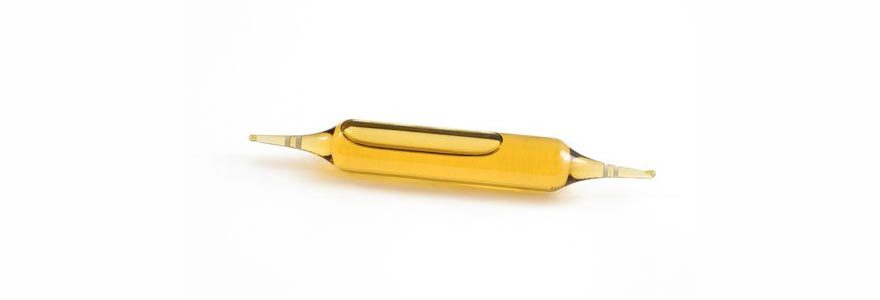Ampoules are glass containers that hold a liquid. The type of ampoule you buy will depend on how much liquid you want to contain. You can also choose between glass and plastic ampoules, depending on how often you'll be using them. Glass ampoules are the most common ampoule type. They're usually made from borosilicate glass, which has high-temperature resistance and great clarity. This makes them ideal for storing corrosive or acid liquids. What's more, these ampoules have the added benefit of being very durable, and they can withstand the pressures of storage without breaking down. Here is how to choose the best ampoules.
Material of the Glass
These ampoules can be made from either borosilicate or soda-lime glass. Borosilicate has a higher melting point and a less brittle fracture than soda lime. Depending on what you need, you can go for one of the two types. Borosilicate glass is usually heavier, denser, and more brittle because it absorbs heat better. It also tends to have a higher melting point than soda-lime glass. In general, borosilicate glass is stronger and more durable as it withstands abuse better than its counterpart. Soda-lime glass has low thermal conductivity but high tensile strength. This makes it highly suitable for plastic ampoules in pharmaceutical applications where good heat resistance is required, but breakage is unacceptable. You can check for ampoules from sources such as sfamgroup.com.
Size of the Ampoule
You'll want to buy an ampoule that's small enough in size to fit on your shelves conveniently but large enough to hold 1-5ml of liquid at a time. It depends on how you want to use it, how often you need to use it, and how effective you want it to be. If it's too large, the contents will be exposed to harsh light and heat, thus making it difficult to use it again, and you could even risk having part of its contents spilling out. The ideal ampoule diameter is between 3mm and 6mm. The smaller the diameter of your ampoules, the easier they are to handle in syringes but cause problems when refilling without getting clogged up by cotton wool. The larger your diameter is, the more the liquid it can hold. It helps the users dispose of the ampoules after using them in their routine medicine disposal. Additionally, an adequate amount of liquid must be left at a reasonable height that users can reach without any difficulty. All these depend on the ampoule's diameter and shape.
The Colour and Design of the Ampoule
The colour of the ampoule is the easiest way to differentiate between doses and help users identify the right amount in their syringes at a glance. One type may have a single-tip while another is a double-tip ampoule and brings more flexibility. Additionally, ampoules should be transparent and look similar to your other drugs, as they are unlikely to get any stickers attached. They only get labels if they are made for special packaging. You can also get your ampoules in different colours so that it is easy to help identify them. Since they are mostly used in hospitals, the different ampoule colours help to remind patients to take their medicine at the required time. Depending on where you buy them, you can also have them personalised in the design and colours. Ampoules are an integral part of the medical field. These are small, glass containers that carry medicines. The medicine is chemically changed and filtered by the glass ampoule to prevent the growth of bacteria or other contaminants. Glass ampoule types are typically used for personal use, and choosing the right one doesn't need to be a hassle. After checking out the above considerations, you can conveniently buy them at your local drugstore.
